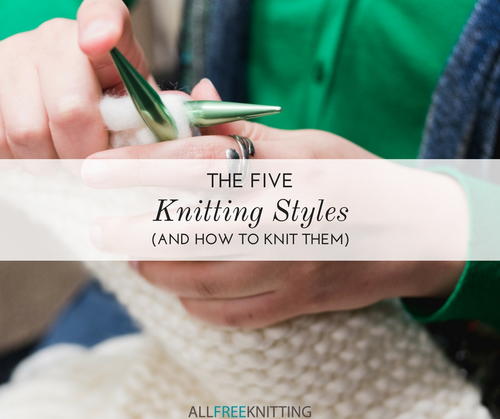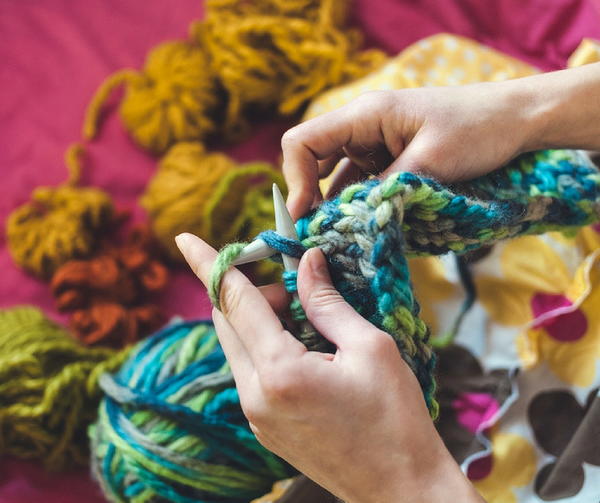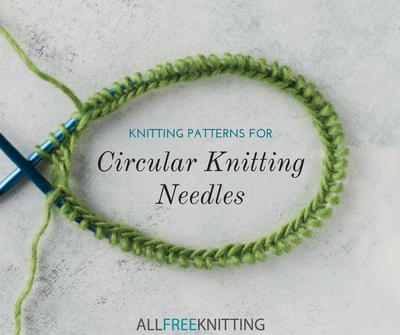The 5 Knitting Styles (And How to Knit Them)
Sometimes referred to as knitting holds, these five knitting styles are distinct from knitting methods. Some of them might even help you knit faster!

Everyone's knitting style is a little different. Whether it's tension, your personal knitting gauge, or the way you wrap your yarn around your fingers. But when it comes to which hand you hold your yarn in, the knitting world is pretty divided.
There are five basic knitting styles based on the way the yarn is held and wrapped around the working needle.
The names of these styles often are associated with nationalities, like English knitting or Irish Cottage style, but the style you prefer has very little to do with where you grew up, or even where you learned to knit.
There are people in England and the United States who do not knit English (also called American) style, and there are plenty of people in continental Europe who would scoff at the idea of holding their yarn in their non-dominant hand, as is done in continental knitting. Likewise, Portuguese knitting is done all over the world, but the name "Portuguese" is just the name that stuck. Because of this, you will see that almost every single one of these knitting styles has two or more alternate names.
For more great projects like this, subscribe to our free email newsletter!
English Knitting (Throwing)
Other Names: American, French (in Japan)
What Is English Knitting?
English knitting is a knitting style that involves holding the yarn in the dominant hand, alongside the working needle. While it is common in the British Isles and North America, English knitting is practiced by knitters all over the world and is probably the most common. In a survey of just under 300 AllFreeKnitting readers, more than 60% said they knit English style.

Continental Knitting (Picking)
Other Names: German, European
What Is Continental Knitting?
Continental knitting is a knitting style in which the knitter holds the yarn with the non-dominant hand. Many knitters find this method a lot quicker, and crocheters who are learning how to knit often find continental feels more natural in their hands. Roughly 30% of the knitters from the survey mentioned above knit continental.
Because this style holds the yarn in the non-dominant hand, there is no need to move the yarn in front or behind the needles in order to switch between knitting and purling. Instead, the yarn is either placed above or below the needle in the non-dominant hand.
Variations on Continental Style
Norwegian Knitting
The Norwegian style of knitting is distinct because of the way purl stitches are worked. The Norwegian purl is worked with the yarn in back; patterns that switch back and forth between knitting and purling, like rib stitches, are great for practicing the Norwegian purl. This particular hold puts the working yarn in the non-dominant hand, which makes it a variant of continental; the knit stitches are worked just like the regular continental style. This video for how to knit the Norwegian purl is a great way to learn this fun and useful technique.
Russian Knitting
Russian knitting is very similar to regular continental, and the knit and purl stitches themselves are worked in the same way. The only distinction with Russian knitting is that the working yarn is wrapped around the pointer finger of the non-dominant hand, very close to where it comes out from the fabric as the leading leg. This makes Russian style a very tight hold that allows you to flick the yarn over the tip of the needle instead of picking it with the needle itself. This style is similar to lever knitting (see below) with the yarn in the non-dominant hand.

Lever Knitting (Flicking)
Other Names: Peruvian, Catholic, Australian, Irish Cottage
What Is Lever Knitting?
Lever knitting a knitting style in which the knitter holds the working yarn in the dominant hand and loops the yarn around the working needle without removing the dominant hand from the needle completely, creating a sort of back-and-forth levering motion.
Many knitters who use this style hold their working needle like a pencil, which frees up their pointer finger to hold the tension of their yarn and "flick" it around the end of the needle. Stephanie Pearl-McPhee, also known as the Yarn Harlot, famously uses this technique to knitting at lightning fast speeds.

Portuguese Knitting
Other Names: Despite the fact that Portuguese knitting is done around the world and is less tied to a specific location than any other style of knitting, Portuguese knitting does not have any other common names.
What Is Portuguese Knitting?
Portuguese knitting is an especially unique knitting hold because the tension of the yarn is not held in the hands at all. Instead, Portuguese knitters wrap the yarn around the back of their necks.
The reason so many knitters like this style is that it frees up the fingers for speed. In every other knitting style, the tension is held in the hands; this gives your hands two jobs to do at the same time -- holding the yarn and working the stitches with the needles. When the tension is held around the neck, there's one less thing you have to worry about when making your stitches.
This technique is also great for helping with knitting pain because so much of the stress in the hands comes from holding the yarn. If knitting with the yarn around your neck is a little too out of the box for you, you can also get a Portuguese knitting pin that attaches to your shirt and holds the tension there.
Shetland Knitting
Other Names: Pit knitting, Scottish, Shetland, From the Hip, Old Way
What Is Shetland Knitting
If you're picturing a woman standing in the Scottish highlands with a knitting needle attached to a belt around her waist and knitting, you're probably not far off. The Shetland style of knitting goes by many names, but it's recognizable because of the way the working needle is held against the body. Because the dominant hand doesn't have to worry about holding the tension of the yarn and the working needle at the same time, this style of knitting is much faster.
Shetland knitting is also one of the new forms of knitting that can easily be done standing up. It was designed as a way for knitters to quickly work up garments while also working on other chores.
This style is very similar to the style used by Hazel Tindall, who is often considered the world's fastest knitter.
Knitting Methods: Eastern, Western, and Combination Knitting
It should be noted that there's a difference between knitting styles and knitting methods. Knitting style is a synonym for a knitting hold -- the way you hold your needles and yarn. Knitting method, on the other hand, has to do with the way you form the stitches themselves.
There are only three possible knitting methods -- Eastern, Western, and combination. Most knitters knit in the Western method, although Eastern is also very common. Combination knitting utilizes the benefits of both styles in one piece of fabric to make complicated stitches much easier to knit. Combination knitting is popular because you can easily switch between knitting and purling without moving the yarn from one side of the needles to the other.
Here's a chart of the main differences between Eastern, Western, and combination knitting methods.
| Western | Eastern | Combination | |
| Knit Stitches | Leading leg in front | Leading leg in back | Leading leg in front |
| Purl Stitches | Leading leg in front | Leading leg in back | Leading leg in back |
| Yarn Wrap | Counter-clockwise (for right-handed) |
Clockwise (for right-handed) |
Counter-clockwise for knit (right-handed) Clockwise for purl (right-handed) |
| Stitches | Worked through front loop | Worked through back loop | Worked through back loop for knits Worked through front loop for purls |
| Twisted Stitches | Worked through back loop | Worked through front loop | Worked through front loop for knits Worked through back loop for purls |
Which knitting style do you prefer?
Let us know in the comments!
Your Recently Viewed Projects
carolknight2 63297 88
Jun 05, 2019
English for over 60 years...... I think I will stick with what I know! The others look so complicated!
streen 9692047
Mar 18, 2019
I never knew that there were so many knitting styles. I was taught the English style by my Canandian Grandmother. I had heard of the Continental Style but none of the others.
Report Inappropriate Comment
Are you sure you would like to report this comment? It will be flagged for our moderators to take action.
Thank you for taking the time to improve the content on our site.















